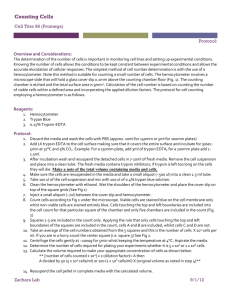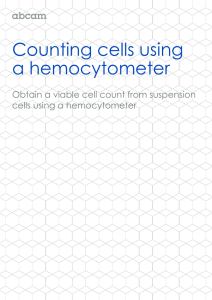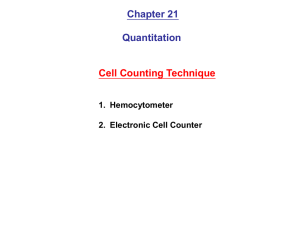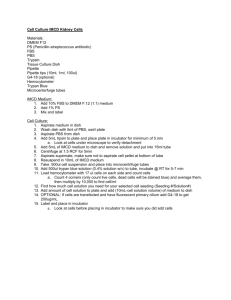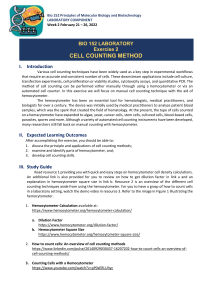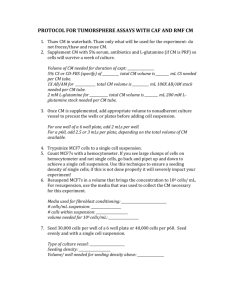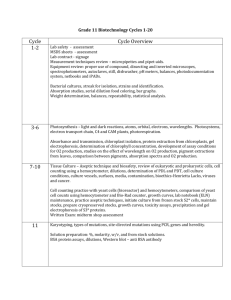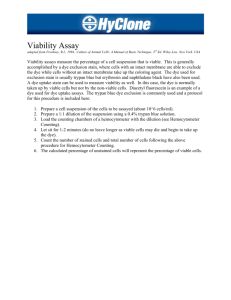Cell Counting by Hemocytometer
advertisement
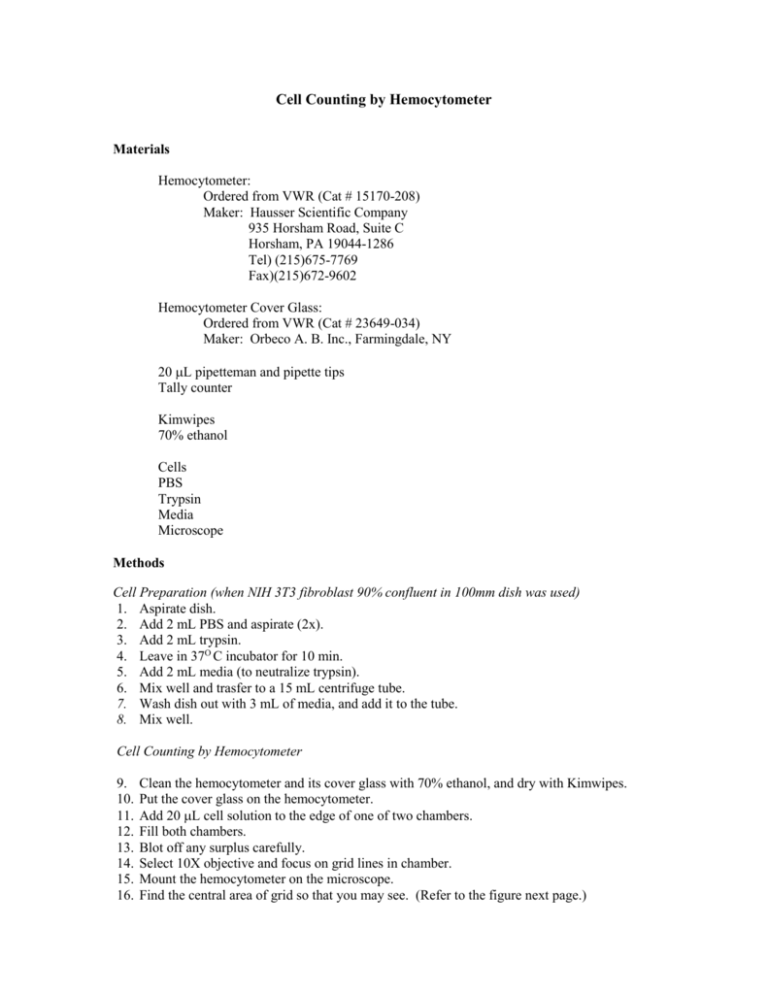
Cell Counting by Hemocytometer Materials Hemocytometer: Ordered from VWR (Cat # 15170-208) Maker: Hausser Scientific Company 935 Horsham Road, Suite C Horsham, PA 19044-1286 Tel) (215)675-7769 Fax)(215)672-9602 Hemocytometer Cover Glass: Ordered from VWR (Cat # 23649-034) Maker: Orbeco A. B. Inc., Farmingdale, NY 20 L pipetteman and pipette tips Tally counter Kimwipes 70% ethanol Cells PBS Trypsin Media Microscope Methods Cell Preparation (when NIH 3T3 fibroblast 90% confluent in 100mm dish was used) 1. Aspirate dish. 2. Add 2 mL PBS and aspirate (2x). 3. Add 2 mL trypsin. 4. Leave in 37O C incubator for 10 min. 5. Add 2 mL media (to neutralize trypsin). 6. Mix well and trasfer to a 15 mL centrifuge tube. 7. Wash dish out with 3 mL of media, and add it to the tube. 8. Mix well. Cell Counting by Hemocytometer 9. 10. 11. 12. 13. 14. 15. 16. Clean the hemocytometer and its cover glass with 70% ethanol, and dry with Kimwipes. Put the cover glass on the hemocytometer. Add 20 L cell solution to the edge of one of two chambers. Fill both chambers. Blot off any surplus carefully. Select 10X objective and focus on grid lines in chamber. Mount the hemocytometer on the microscope. Find the central area of grid so that you may see. (Refer to the figure next page.) 17. Using the tally counter, count the number of cells in the four squares marked in red in the figure. Repeat it for the other chamber. The area for each square is 1 mm2. You may choose to count the number of cells in the central square as in the figure or as in Freshney’s book. In that case, you end up counting two squares total. 18. Calculate the average cell number (n) of the eight squares. 19. Derive the concentration of the sample as follows: C [in cells/mL] = n x 10 4 20. Afterward, clean the hemocytometer and cover glass with 70% ethanol and completely dry before putting back into the box. Reference: Freshney, R. Ian. (1987) “Culture of Animal Cells: A manual of Basic Techniques.” New York, Wiley-Liss, Inc. (pp227-229)

